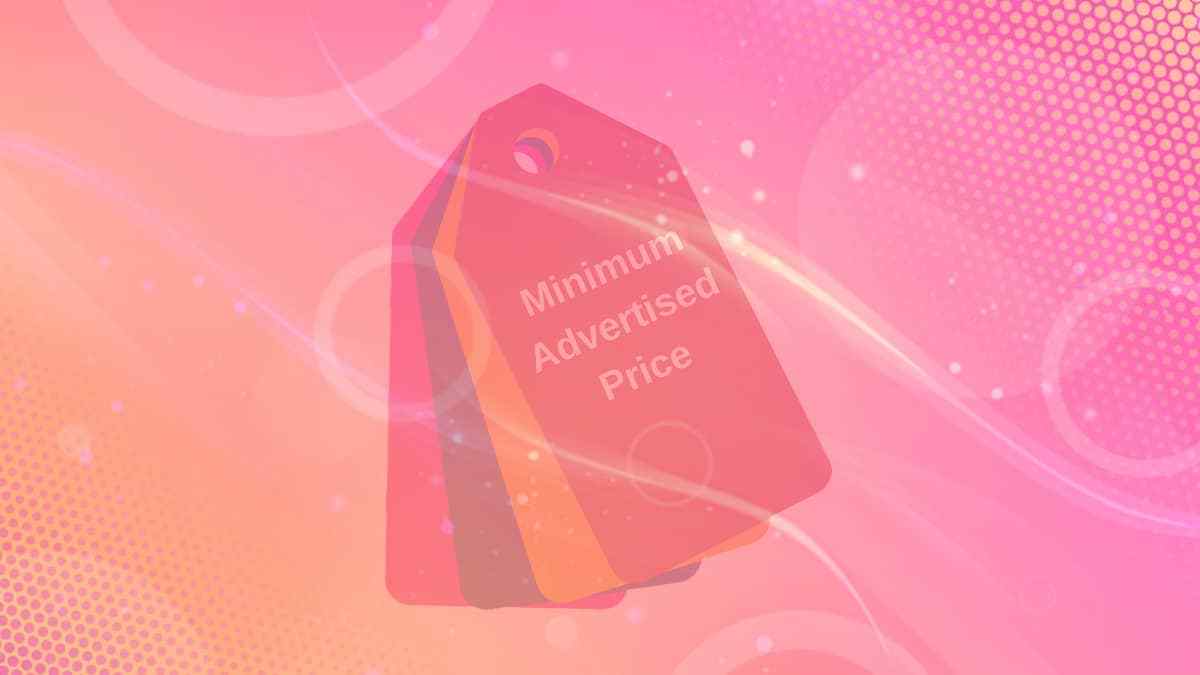MAP PRICING POLICY: All YOU NEED TO KNOW

Introduction
Strategic and on-point product pricing is essential. It is to stay afloat in today's competitive business world. The 21st shopper is savvy. They compare the prices of items offered by different stores. It is before making a purchase. For instance, there was a recent survey by Intelligence Node. It reveals that 92 percent of online shoppers make a price competition at least some time or the other. This ensures they grab the best deal. Thus, dynamic playing is pertinent in providing enterprises with a competitive edge.
This is the race to win customers' attention by offering the lowest prices. However, retailers violate the MAP (Minimum Advertised Prices) policies underlined by brands. The breach is detrimental to the brand's reputation. Ultimately, businesses everywhere are adversely affected by considerable gulfs in product pricing. Hence, MAP regulation was developed. It helps to rein in excessive pricing differences, shield brands from dilutive activities. Moreover, it helps to level the playing field for retailers. What is it all about? Let us find out!
Minimum Advertised Pricing: A guide

To begin with, Minimum Advertised Price, abbreviated as MAP. It is the predetermined and the lowest price. It brands or manufacturers enable retailers and other channel partners. It helps to advertise and sell a particular product. The Minimum Advertised Price ensures that retailers can make a decent profit. It also ensures that the brand's integrity and brand are also maintained. A massive reduction in price by one retailer can cause price wars. It can culminate in the devaluation of the brand's products. Thus, MAP (Minimum Advertised Price) monitoring helps the manufacturers. It ensures that their products are advertised at the desired price. It is the threshold across all outlets.
However, it is noteworthy to mention that MAP policy only controls 'advertised price.' Retailers can sell the products at a price lower than in MAP in-store. When a jewellery brand fixes the MAP of a ring at USD 200, retailers are mandated to advertise the product at USD 200. The retailer can provide a lower in-store discount on the product. It will be regarding the actual selling process. Thus, the crux remains that retailers must refrain from promoting lower prices. It is irrespective of any medium or online shopping catalog.
MAP V/S iMAP Pricing:

Although the terms iMAP and MAP might seem similar to the untrained eye, there is a crucial difference. The main distinction persists in the store location and product types. iMAP or Internet Minimum Advertised Price is the policy brands, or manufacturers devise. It is to sell and promote products on websites and eCommerce stores. Thus, unlike MAP policy, which primarily focuses on offline and conventional advertising. They are like newspapers, TVs, billboards, catalogs, etc.
iMAP is premised on online promotions. Hopefully, the fundamental difference between iMAP and MAP policies is clear. Now, let us dabble into the do's and don'ts of building the perfect MAP pricing formula.
The MAP Pricing Formula: Top Five Ways to Built It:

1. Profit Margin:
What is the main driving force while determining the MAPP product pricing strategy? It should be the profit margin. The strategy holds relevance for both online (iMAP) and brick-and-mortar (MAP) platforms. MAP policy pricing must be rooted in realism. So that retailers can make a decent profit. It is irrespective of the dollar amount or percentage.
2. MAP V/S MSRP Caveat:
Retailers and consumers can better comprehend the brand's vision. They can check the product's perceived worth and highlight the possible profits. Many brands or manufacturers can do so with Minimum Recommended Retail Price (MSRP). However, the MSRP is 'suggested' and not obligatory. Thus, as MAPP and MSRP differ, many experts opine that brands should avoid making them the same. Some manufacturers do entirely away with MSRP and only use MAPP. Brand owners purposely fix the MSRP very high. They know that retailers will discount it anyways. The ultimate cost will reach the threshold they want.
3. Average Online Price Evaluation
When building a MAPP Pricing formula, the objective is compliance. Thus, brands should be practical and not choose a price lower than other retail partners. The optimal trajectory is to monitor product prices for at least two months. It is before locking the MAP price. The timeframe paints a realistic picture of the average price product. This is what manufacturers co-opt to make the final choice.
4. Pragmatism is Pertinent
Fourthly, when it comes to MAP price fixing, brands should not be arbitrary in their approach. The key is to be pragmatic and make decisions based on objective data, statistics, and metrics. Suppose the average online price of a product is 5 percent below the level desired by the brand. It can devise the pricing formula to go down from the MSRP or up from the wholesale cost. Both approaches are feasible if the price reaches the 5 percent threshold.
5. MAPP Consistency
Lastly, there is another question regarding building the MAPP pricing formula. It is whether it should remain consistent for all products! Well, there is no one-size-fits-all approach when it comes to MAP product pricing. However, as MAPP is easy to follow, being uniform is much more feasible. It helps resellers set the MAP automatically and is hassle-free for the brand.
How Do You Decide Which Products Should Be Priced at MAP: Two Considerations?
To begin with, brands must understand that not all products need MAP policy coverage. It is legal and wise to apply MAP policy to select items. Selectivity helps brand owners be more successful. However, there are some considerations that can help a manufacturer decide. It is which products MAPP should encompass are –
- Brands should determine which of their products are the most valuable. They must use that in their business and their target market. They should apply MAP to only those products without which they would go out of business.
- MAP protection: The brand requires internal enforcement resources for products. They are the ones to be protected by MAP. Sales, accounting, and shipping inventory management become highly complex. It is if a MAP policy bolsters every product.
Now we have a fundamental idea of the Minimum Advertised Price (MAP). So, let us wrap the article by gauging its importance for brands.
Top Four Benefits for MAP pricing:

Brand Protection: Brand value is intrinsically related to pricing. MAP is crucial to maintain the brand reputation. It is especially regarding luxury items or premium products.
Retailer Protection: Not fixing MAP can lead to price wars. It compels some retailers to stop stocking specific brands' products altogether. Thus, MAP policies protect the retailers' interests. It creates a respectable bond between brands and retailers and retailers and resellers.
Increased Sales: More distribution channels will want to carry a brand's items. It is if they take measures to safeguard the profit margins of those merchants. Ultimately, sales and profit automatically shoot up. It is as the product becomes available on multiple channels. Thus, a MAP policy creates a level playing field for all retailers. It is irrespective of their scale and type.
Excellent Performance Analysis: Lastly, a MAP policy helps brands skillfully analyze their performance. As the price range remains constant, customers do not make buying decisions based on the cost. Thus, brands can examine the other factors contributing to product sales. They can get a better insight into consumer behaviour.
Conclusion
So, there we have it. A comprehensive overview of MAP, the optimal MAP devising formula. Its unrivalled significance for brands and retailers. MAP policies provide brand owners and manufacturers more control over product pricing. The culmination is a more equitable retailer landscape. Lastly, when talking about MAP policy, it is essential to remember one aspect. Retail stores have absolute freedom over co-opting merchandising strategies. They can deploy store promotions, etc., to gain better footfall.
